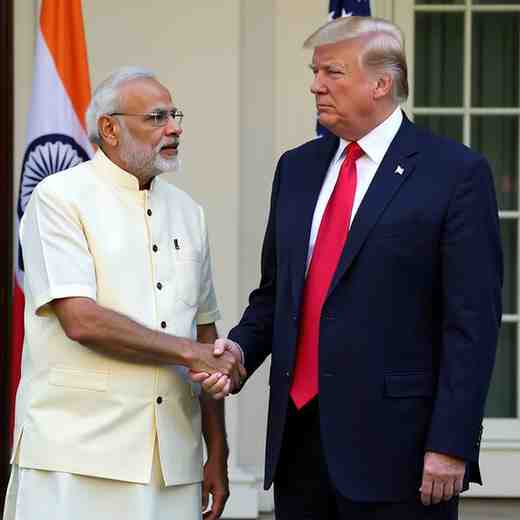
The Tensions And Uncertainty Renewed Summits between Indian Prime Minister Narendra Modi and U.S. President Donald Trump have placed Indian foreign policy in renewed state of complexity and uncertainty after the August 2025 Alaska U.S.-Russian Summit. While friendly, the visit did not produce major breakthroughs, and its results have been directly at odds with India’s most basic strategic and economic interests.
Unmet Expectations from the Summit
India had expected the summit would help alleviate two major sources of U.S. pressure:
- Sanctions Relief: A reversal of secondary sanctions that include a 25% tariff on Indian purchases of Russian oil.
- Trade Resumption: Restarting bilateral trade discussions that have stalled.
Such hopes were quickly beset by the U.S.'s refusal to budge. Donald Trump's top advisor Peter Navarro reiterated the commitment to punitive tariffs against India, leaving no room for adherents of policy change prospects.
Ongoing Points of Tension
Foremost among them: the U.S sanctions on Russian oil imports. India sees them as geopolitically driven rather than consistent, given that the United States still trades with Russia and that China imports much more Russian oil without similar penalties. In addition, India using the India-Pakistan ceasefire not to give Trump any credit further strained the diplomatic relations.
Reevaluating India's Diplomatic Approach
The post-1 summit wreckage has revealed the limits of India’s penchant to focus so much on high-profile personal diplomacy. For all the warm hugs that Prime Minister Modi and the leaders of U.S. and China had exchanged, India didn't manage to fend off big policy reversals or to keep confrontation off the radar. This is the experience that amplifies the requirement for substantive policy agreements rather than symbolic engagements.
Asserting Strategic Autonomy
Here, India's apriori that it would follow only UN mandated sanctions is already under challenge. And its previous cooperation with U.S. demands on Iranian and Venezuelan oil may have led to the current pressure on Russia. But in withstanding this pressure, India has secured the quiet support of other Global South countries and reasserted its dedication to an independent foreign policy — even if it may come at an economic price.
The Path Forward
India is seeking to widen its partnerships to reduce the leverage of any one power over it. As we prepare for upcoming diplomatic engagements, like trips to Japan, China and South Africa, and the Quad Summit, now is the time to fortify substitute alliances. A firmer posture will be necessary to check U.S. game-playing that undermines India’s economic interests and sovereign rights.
Month: Current Affairs - August 21, 2025
Category: current affairs daily